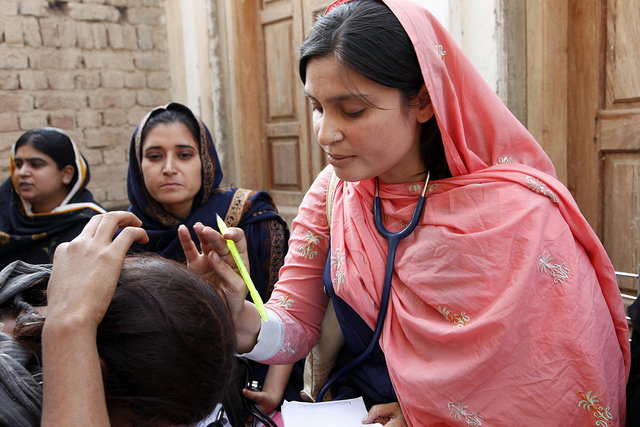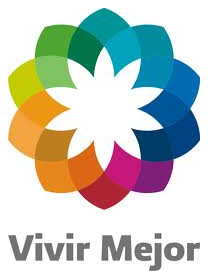Over the past 30 years, I have worked on many reference books, and so am no stranger to recording change. However, the pace of change seems to have become more frantic in the second decade of this century. Why might this be? One reason, of course, is that, with 24-hour news and the internet, information is transmitted at great speed. Nearly every country has online news sites which give an indication of the issues of political importance.
The post Why is the world changing so fast? appeared first on OUPblog.
Recently, debates about inequality have risen to the forefront in academic and public debates. The publication of the French economist Thomas Piketty’s Capital in the Twenty-First Century in 2013 did not, to say the least, go by unnoticed. And many other prominent economists have partaken in the debate about global inequality: Paul Krugman, Joseph Stiglitz and Angus Madison, just to name a few.
The post The business of inequality appeared first on OUPblog.
By Bruce Currie-Alder
Is thinking on international development pulling itself together or tearing itself apart? The phrase ‘international development’ can be problematic, embracing multiple meanings to those inside the business, but often meaningless to those outside of it.
On the surface, the Millennium Development Goals and debates towards a post-2015 agenda imply a move towards consensus. The past 60 years saw the development agenda embrace political independence, economic growth, human needs, sustainability, poverty reduction, and human capabilities. Each represented a particular understanding of what constitutes “development” and how to achieve it. Once dominated by economics and political science, the ideas and concepts used to explain development now draw on insights from across the natural and social sciences. Beyond academic debate, such ideas motivate real-life organizations and practitioners and shape their actions.

A female doctor with the International Medical Corps examines a woman patient at a mobile health clinic in Pakistan. Photo by DFID/Russell Watkins; UK Department for International Development. CC BY 2.0 via DFID Flickr
After interacting with over 90 writers over three years, I am convinced that thinking on development is tearing apart. Contemporary thinking comes from an increasingly diverse set of locations, with Beijing, New Delhi, and Rio de Janeiro challenging and enriching the ideas emanating from London, New York, and Paris. The rise of regional powers and localized approaches to development are reshaping our understanding of how human societies change over time. Fundamentally, the policy space for “international development” is tearing into three separate dialogues.
Sovereign problems concern the use of national wealth. All polities face real constraints in public finance and our societies face analogous challenges, such as: expanding access to and improving the quality of education and health, designing social protection to ensure a minimum wellbeing for everyone, or encouraging opportunities for entrepreneurs and minorities. Dialogue and action on sovereign problems involve national treasuries, political parties, and (mis)informed citizens. One can be inspired by experience abroad, but solutions must be tailored to fit within local cultural, political, and economic reality. This aspect of international development is growing.
Common problems concern international public goods. A sizable portion of our problems spill across borders and potential solutions require cooperation among different polities. Climate change, emergent diseases, and trade regimes surpass the ability of any one country and are affected by the choices made by others (indeed the nation-state is seldom the most useful unit of analysis). Common problems involve separate actors, ranging from municipalities and hospitals, to trade negotiators and the alphabet soup of international forums (IPCC, WHO, IFIs). After the rise of globalization, this aspect of international development is holding steady given the reality of a multi-polar world.
Foreign problems concern how to respond to troubled places abroad. Six decades of development saw substantial increases in life expectancy, human rights, and literacy. Yet there remains a stubborn set of poverty hotspots, ungoverned spaces, and fragile states where life continues to be nasty, brutish, and short. Dialogue and action involve foreign ministries, aid agencies, and NGOs. There are encouraging signs that this aspect of international development is in decline. The long-term trend witnessed a decrease in inter-state conflict and a dwindling list of low-income countries reliant on foreign aid. As such, the agenda is narrowing towards humanitarian relief, rural development, and state-building in remote locations.
This triad of sovereign-common-foreign offers one potential typology for the future evolution of thinking currently gathered under “international development”. Put more simply, when world leaders meet, the problems they discuss fit into the categories of mine-ours-theirs: those involving dialogue at home, those that require coordinated action across borders, and those related to hotspots beyond our borders.
In short, the label of “international development” has outlived its usefulness and is tearing apart in both academics and practice. For example, in the United Kingdom there is a tension between “development studies” focused on low-and-middle income countries, and “development sciences” applying technology to the needs of the poor. Meanwhile the range of organizations that engage in development has expanded, diversified, and coalesced into specialized communities. Once the exclusive purview of aid agencies and international organizations, there is an increasingly role for national treasuries, domestic charities, and diasporas in addressing different problems.
Looking forward, it seems likely that what is described as “international development” is destined to become a historic juncture, describing a period when we jumbled things together differently.
Bruce Currie-Alder is Regional Director, based in Cairo, with Canada’s International Development Research Centre (IDRC). He is an expert in natural resource management, and on the policies that govern public research funding and scientific cooperation with developing countries. His previous experience includes facilitating corporate strategy, contributing to Canada’s foreign policy, and work in the Mexican oil industry. He co-edited International Development: Ideas, Experience and Prospects (Oxford 2014) which traces the evolution of thinking about international development over sixty years. Currie-Alder holds a Master’s in Natural Resource Management from Simon Fraser University and a PhD in Public Policy from Carleton University.
Subscribe to the OUPblog via email or RSS.
Subscribe to only business and economics articles on the OUPblog via email or RSS.
The post Pulling together or tearing apart appeared first on OUPblog.

By Susan Pick
With all the ambitious international goals and targets that developing countries have committed to, from poverty reduction to universal education and access to health care, we’ve observed a not uncommon response by the governments: too strong a focus on the public image of the new programs, not strong enough a focus on making the programs truly accessible. Here’s an example to illustrate our point: On a daily basis, Mexicans are exposed to immeasurable social development propaganda from government agencies. The propaganda is unavoidable because these messages are disseminated via commercials on public transportation, highway billboards, TV and radio, and posters in the most rural communities. Some of the current hot topics of these campaigns are diabetes and childhood obesity, nonviolence toward women and anti-corruption laws.
 “Vivir Mejor” (“Live Better”) is the federal government’s umbrella strategy behind many of these flashy ads, and its aim is to eliminate extreme poverty and promote sustainable human development throughout the country. The rainbow-colored logo is impossible to miss and is stamped on nearly everything the government is involved with. “Vivir Mejor” social development campaigns share with the public the services they are entitled to. A man that never got the chance to study when he was young is now completing his secondary education – and you can do the same, for free! A smiling woman is receiving free prenatal health care –and you can sign up for it as well, it’s simple! In addition, many of the “Vivir Mejor” campaigns encourage the public to exercise their rights. This involves procedures like signing up for government health insurance, filing a report in the case of sexual harassment, and requesting information from the government’s transparency portals.
“Vivir Mejor” (“Live Better”) is the federal government’s umbrella strategy behind many of these flashy ads, and its aim is to eliminate extreme poverty and promote sustainable human development throughout the country. The rainbow-colored logo is impossible to miss and is stamped on nearly everything the government is involved with. “Vivir Mejor” social development campaigns share with the public the services they are entitled to. A man that never got the chance to study when he was young is now completing his secondary education – and you can do the same, for free! A smiling woman is receiving free prenatal health care –and you can sign up for it as well, it’s simple! In addition, many of the “Vivir Mejor” campaigns encourage the public to exercise their rights. This involves procedures like signing up for government health insurance, filing a report in the case of sexual harassment, and requesting information from the government’s transparency portals.
Making people aware of their rights and the social programs they can benefit from is indispensable…in theory. How can these types of public campaigns possibly be inefficient? Why aren’t poor people in Mexico seeking health care or going back to school or reporting abuse of their basic human rights? The first problem is most obvious: there are incredible structural barriers to accessing social services in Mexico; widespread corruption and absurdly bureaucratic procedures prevent Mexicans from registering for social programs or filing reports when their rights are violated.
The second problem is less obvious, but its solution is essential for Mexico to achieve its development objectives: there is a severe lack of civic engagement in Mexico. The lack of participation in pubic affairs that this implies results in the absence of social action and citizen monitoring, as well as the underutilization of government programs. The unengaged citizen lacks psychological preparedness for accessing his or her rights and seeking opportunities for personal development. Some examples of psychosocial barriers to participatory citizenship include the internalization of feelings of inferiority, a lack of intrinsic incentive to bring about change, and insufficient communication and team work skills. All of these factors are directly related to what’s been labeled “low intensity citizenship” in Mexico (Ochoa Espejo).
The solution to the problems we mention lies in the development of an individual’s personal agency. In other words, she needs to feel empowered and entitled to make changes in her life. If social programs were designed to facilitate the acquisition of psychosocial tools like assertive communication, autonomous decision-making, and critical thinking in addition to classic welfare services, citizens would become participatory agents of change. Once engaged, the everyday citizen has an incredible pow




